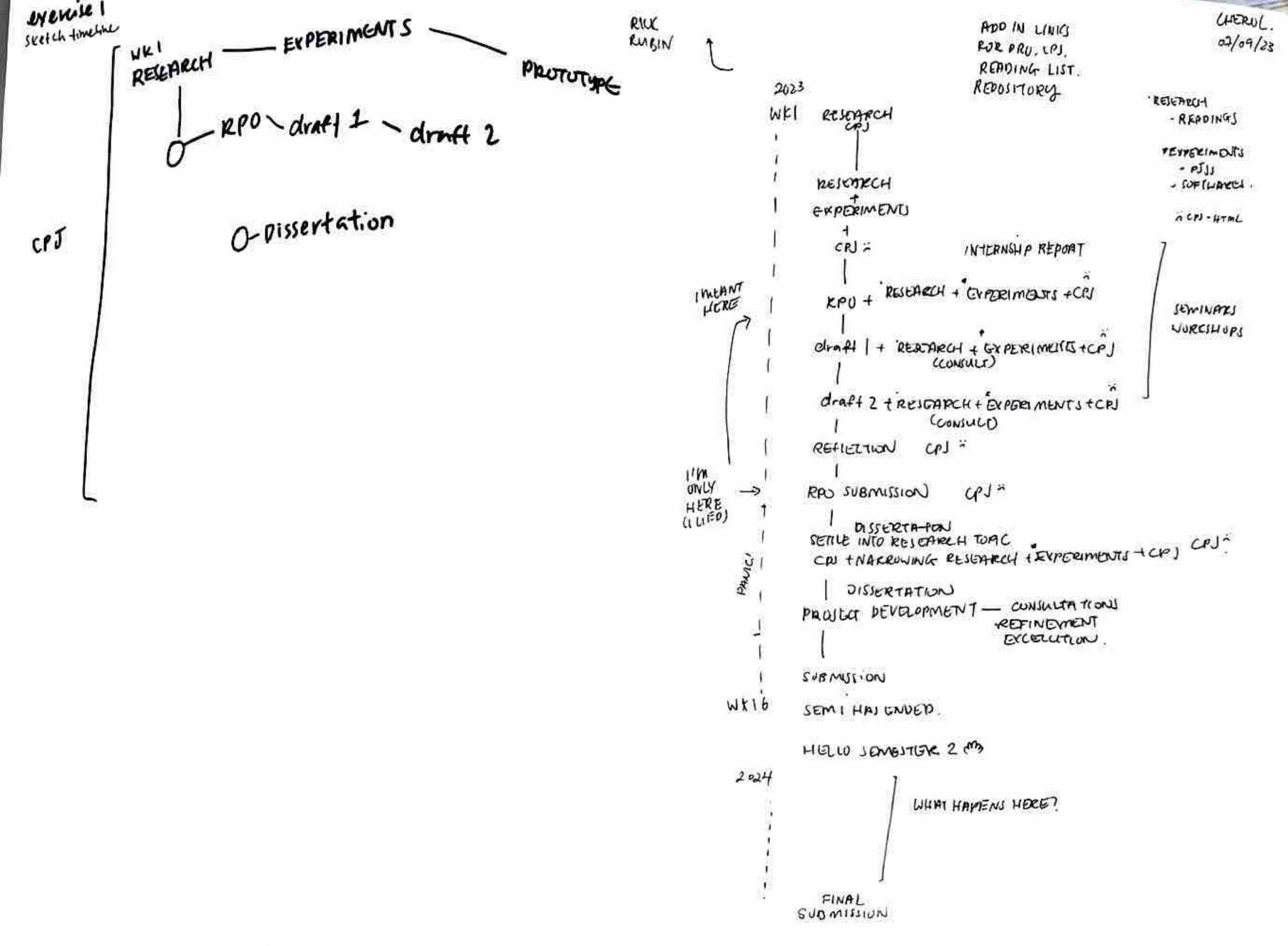Week 4: Workshop 1 – Sketching
At the beginning of the class, Andreas presented a visual representation outlining the overall look of
his final year project through a timeline. Subsequently, we were assigned the task of sketching our own
timelines that we envision for ourselves this semester.
The act of sketching, especially with traditional tools like pen or pencil on paper, serves as a
liberating and flexible medium for expressing ideas in a less structured manner, devoid of meticulous
planning or precision with rulers. This method allows for the freedom to quickly generate and capture
concepts in a spontaneous and intuitive manner. The tactile nature of the process encourages
exploration, enabling the creator to experiment with various shapes and lines, fostering a diverse
exploration of design possibilities. Embracing imperfections, the organic quality of hand-drawn sketches
adds a unique and personal touch to each concept, while the less formal nature of this approach reduces
the pressure to achieve flawless representations. The sensory engagement of pen or pencil on paper and
the serendipity of unexpected discoveries during the sketching process contribute to a more immersive
and authentic connection with the creative journey.
-
Sketching the Timeline On the left is drawn by Andreas, right is drawn by me.
Workshop 2: How to utilise concept mapping
In today's class, we delved into a valuable strategy for organizing and expanding our thoughts on our
research topic through the use of a concept map. This prompted a natural curiosity about the
distinctions between concept mapping and mind mapping. Concept mapping involves the visual
representation of relationships between ideas, typically using links to illustrate the
connections. It emphasizes hierarchical structures and focuses on organizing information in a more
structured manner. On the other hand, mind mapping is often a more free-form technique, centering
around a central idea with branches radiating outward to represent related concepts. It encourages a
more organic and associative approach to idea generation.
As we progress, the pivotal task of narrowing down our focus to three key pillars for our research
comes into sharper focus. This process involves careful consideration of the relationships and
significance of each pillar, weighing their individual potentials, and discerning how they
collectively
contribute to the overarching research objectives. The chosen pillars will serve as the foundational
framework for our research, guiding our inquiries and shaping the structure of our exploration.
The tools and techniques introduced in this class not only aid in the initial stages of idea
generation but also play a crucial role in the later stages of refining and crystallizing our research
focus.


Encounter Exhibition
Andreas encourgaed the class to go to this exhibition and collect our thoughts and reviews about the works that have been shown in here as part of our learning. We then have to write our thoughts inside a google sheet provided by Andreas. It was cool to see my project being displayed there from when I did it in the data spaces module. But besides that we noticed that there were a lot of AI driven designs and projects. Link to Encounters Reflection
Texture Studies
From my observations, the textures I dislike are often found in my everyday surroundings. For instance, I avoid stepping on grass barefoot and dislike the feeling of plants brushing against me. When shopping for groceries, I am not fond of touching fruits or other items due to their textures. These environmental textures piqued my curiosity, leading me to explore Pinterest for inspiration for mood boards. Here are some visuals that caught my attention. While many of them are handmade or crafted, I appreciate how textures can be replicated through different mediums. Looking at these visuals evokes sensations that either make me want to touch or avoid touching them.






